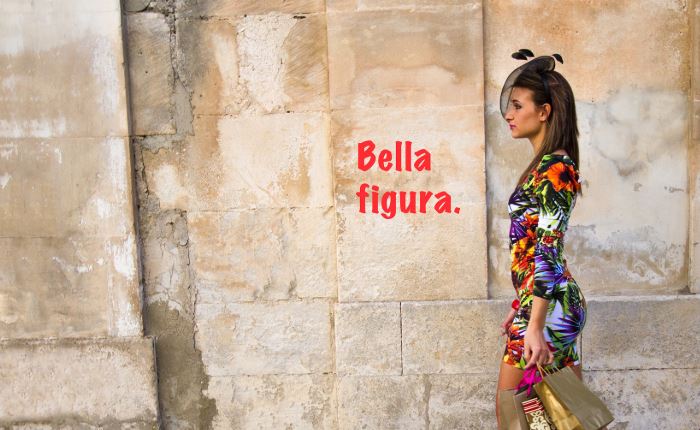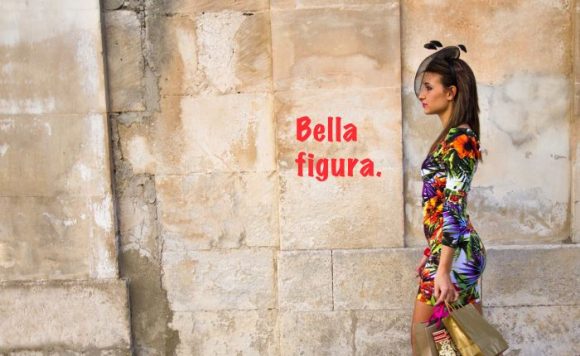
Fashion has long formed part of Italian culture, playing a key role in the country’s society and lifestyle. Although historically, Italian fashion has focused on quality and design, the last decade has seen a shift towards fast fashion following the economic downturn. However, with rising concerns about climate change and pollution in recent years, Italian people are starting to balance their love of fashion with a more sustainable mindset.
As part of our ongoing Illume Guide featured blog posts, we interviewed our Italian Guide – Chiara, to explore emerging fashion trends in Italy.
Hi Chiara! Tell us a bit about yourself – where are you from, what do you do and what are you passionate about?
Hi Cherry! I’m from Portogruao in Italy. I’m currently studying for my postgraduate in Fashion and Business. Fashion has always been my biggest passion. I started to buy magazines when I was around 10 years old and would sneak in my Mum’s closet to try her clothes and bags!
Tell me about fashion culture in Italy
Italian people are obsessed with fashion, especially as it’s the birthplace of many designer brands like Armani, Gucci, Prada. Italian fashion is about craftsmanship, quality and creativity. Over time, different regions have developed their own specialities – for example, leather goods in Tuscany, wool in Biella and silk in Como. You can find many fashion chains in big cities, however, we still tend to trust smaller local, independent boutiques more.
People here value creativity and design, and we see fashion as a way to distinguish ourselves from others. Each individual wants to dress in a unique way. Compared to other countries, people in Italy pay special attention to the way they dress. ‘La Bella Figura’ literally means beautiful figure, which is an essential philosophy that many Italians live by.
What is unique about Italian fashion culture compared to other European countries?
In terms of style, I think the UK is characterised by an urban/sporty style, whereas Italian style is more a mix of casual and elegant. We really balance proportions and make sure that all the colours match well together. Italians put great importance on glamour. Apart from that, we pay special attention to accessories. People will buy simple clothing, but are willing to invest more on timeless pieces like designer handbags, sunglasses and jewellery. Compared to the UK, Italian people also still prefer to pay in cash.
Have you noticed any changes in terms of fashion culture in Italy?
Yes! In the past, people took fashion inspiration from magazines. Now people turn to social media, especially Instagram. There are many style influencers from TV shows, like Temptation Island, who young people like to follow.
The growth of fast fashion is also changing the traditional Italian fashion scene. Despite individuality being important to us, outfits are gradually becoming similar from bigger brands. I’ve noticed the older generation being influenced by this trend too, especially after the economic downturn in 2008, which prompted people to look for cheaper alternatives. My grandma recently started to buy clothes from H&M, which she would never have done ten years ago.
Can you tell me about luxury fashion in Italy?
From my perspective, luxury is a combination of different elements: quality material, creative design, excellence and craftsmanship, and the art of producing it.
In general, Italian people still really appreciate luxury goods. It’s important for people to have certain luxury items as a way to increase their social status. An Italian TV show (Le Iene) made a report about the outfits of millennials in Milan. Despite being young, their outfits were from incredibly expensive brands.
Younger Italians don’t really have a strong preference for local or international brands, they tend to go for whatever is fashionable that season. Whereas the older generation still prefer Italian brands, and ‘Made in Italy’ signifies excellence to them.
Have you noticed any changes in terms of luxury in Italy?
There is a shift from luxury being solely focused on heritage to also being about brand names and making profit. The price of luxury items continues to rise every year. There used to be many family-owned businesses in Italy. However, many have been acquired by a French company called LVMH. They still want to maintain the heritage of an Italian brand, but the original brands are losing their identities a bit.
Aside from that, social media especially Instagram plays an important role in promoting luxury. This is part of luxury brands positioning themselves as more accessible. Whereas in the past you had to shop at a high-end boutique.
People invest more in durable items like coats, bags and shoes, but tend to buy fast fashion brands for everyday wear. After the recession, Italians are looking to balance timeless goods with affordable fashion. Luxury is appreciated but less affordable, whereas fast fashion gives people the chance to update their wardrobes and keep up with fashion trends. After all, people still want to be fashionable.

Can you think of any luxury brands that are popular among Italian people?
One very popular luxury brand in Italy is Gucci, mainly for their bags and shoes. They recently hired a new creative director who seems to understand the taste of young consumers, combining contemporary and vintage elements. He’s making the brand less traditional, and more eclectic.
Is sustainability in fashion becoming a concern for Italian shoppers?
Although fast fashion has become more and more popular here, people are starting to become aware of the impact of fast fashion on our planet. So people are looking for ways to sell clothes that they don’t want to wear anymore. I believe people want to convert to a more sustainable lifestyle but it takes time to change attitudes.
What advice would you give to a new fashion brand entering the Italian market?
First, focus on quality. Good quality has always been appreciated in Italy. Second one is individualism. Italian people love fashion and want to show their individuality through their style. Although fast fashion is more popular now, it makes everyone look the same. Many brands see this as an opportunity to customise clothes or accessories.
Another piece of advice would be to advertise through social media and hire brand ambassadors who have similar values to the brand. Lastly, competition is very intense in the Italian fashion market; a brand should be innovative and offer something that Italian people cannot find anywhere else, yet still be in touch with current trends.



